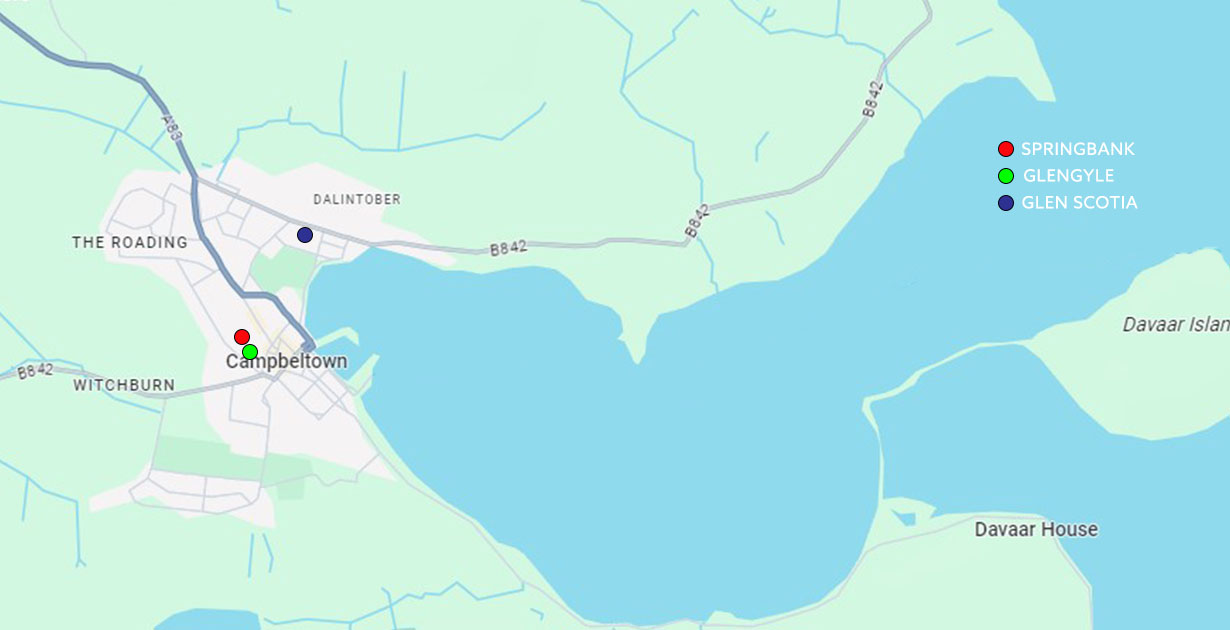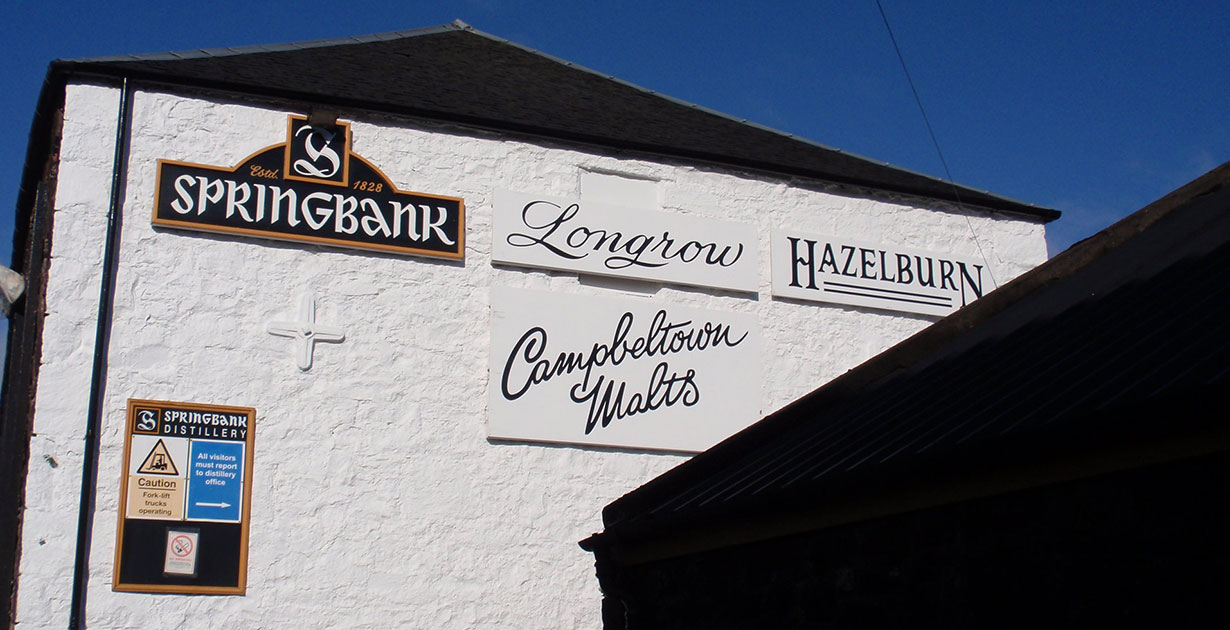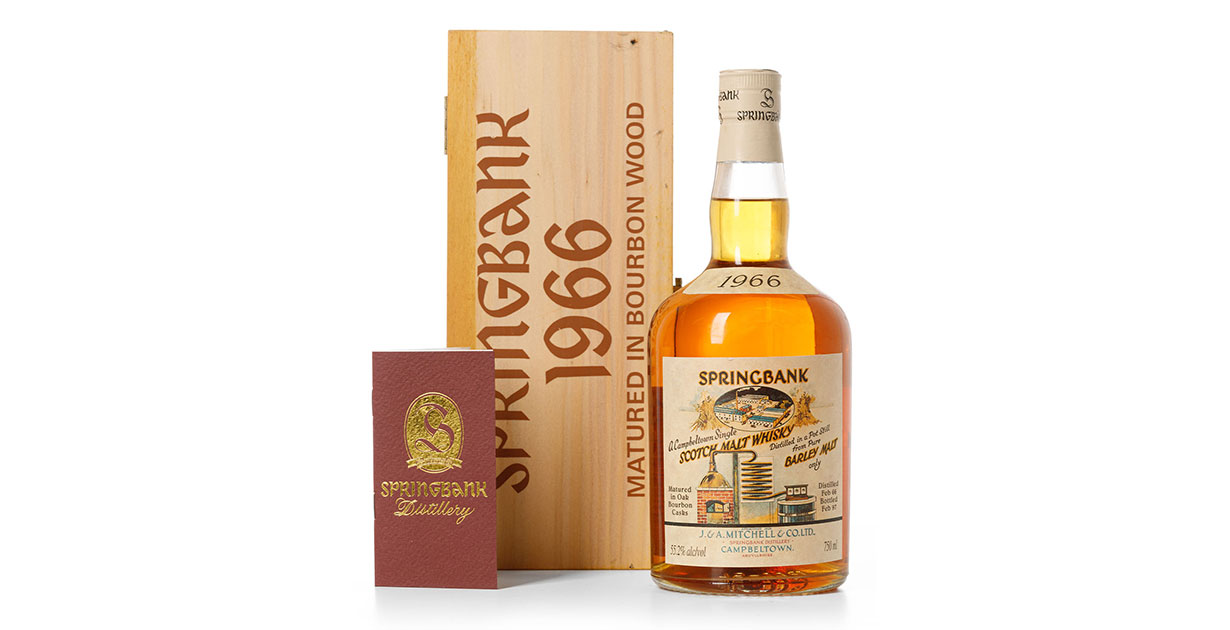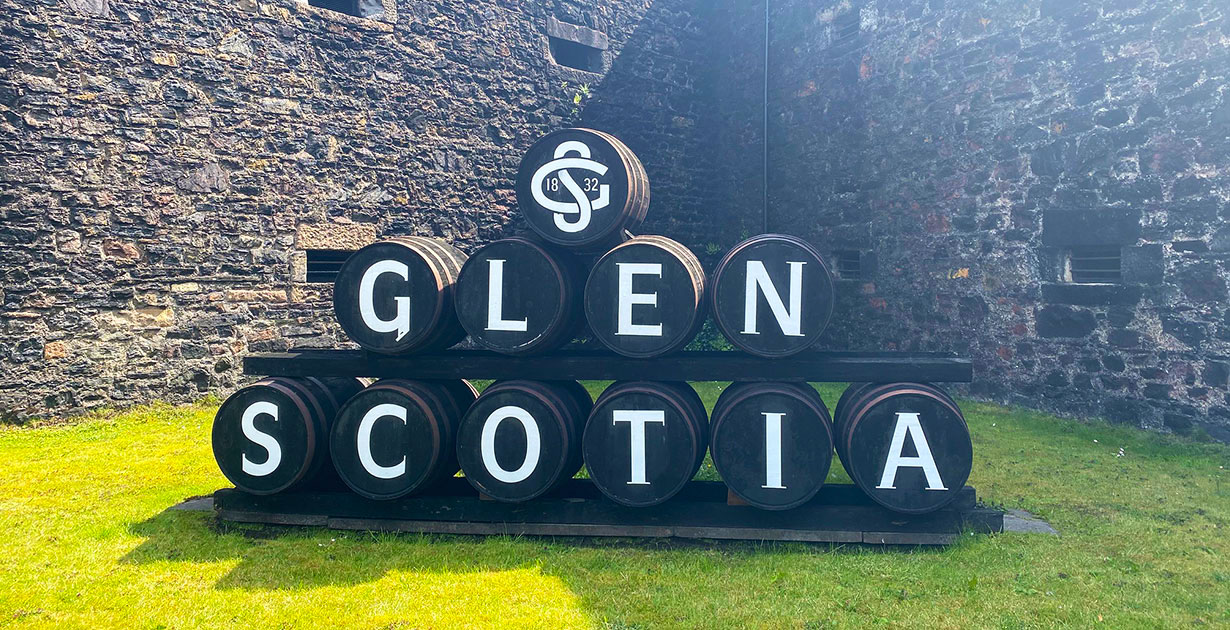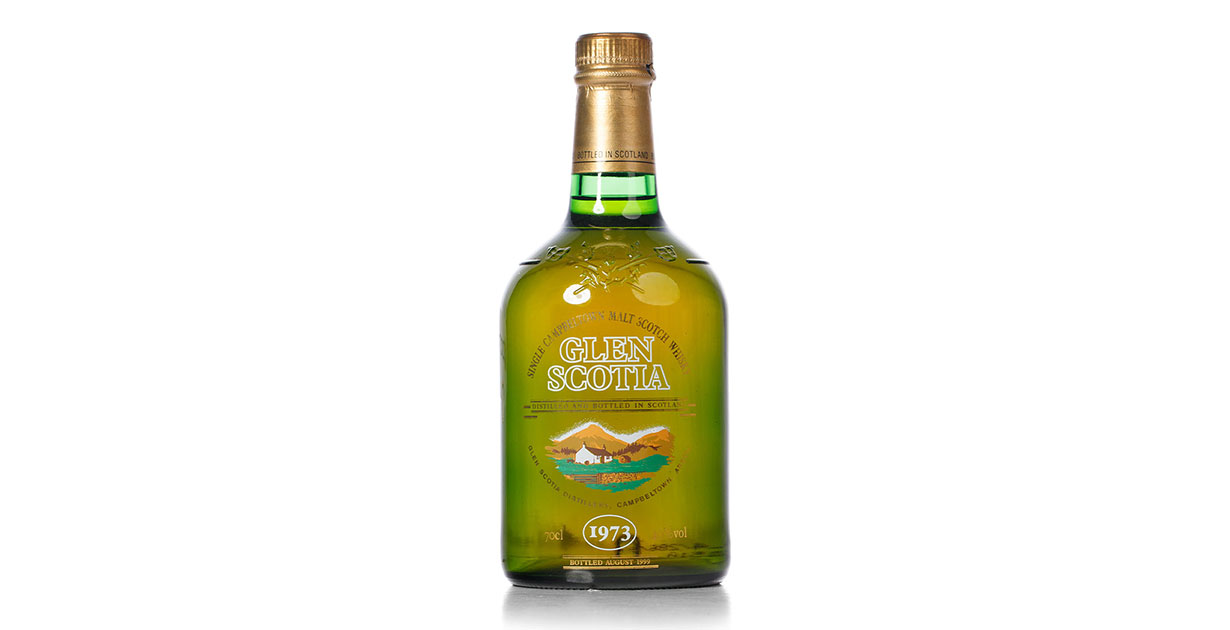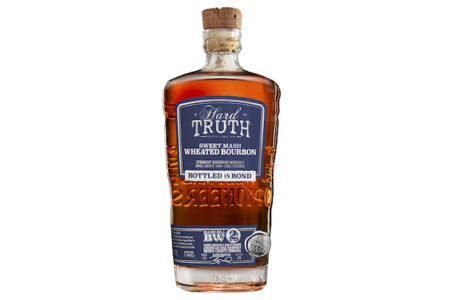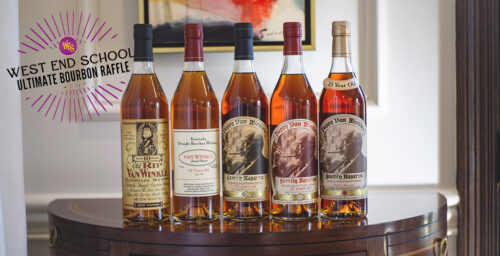Campbeltown was once considered the whisky capital of the world. At its height, over 25 distilleries operated in the small, coastal town on the Kintyre Peninsula, with the area becoming a hub of distilling activity. Alfred Barnard’s stay in “Whisky City” during his 1885 tour of the distilleries in the UK, lasted two weeks. He visited each of the 21 distilleries that called Campbeltown home, swept up in the hustle and bustle of a community centered on distilling.
Fast forward almost 140 years, and there are only three active distilleries left in Campbeltown: Springbank, Glengyle, and Glen Scotia. Combined, they have a total output of around 2.25 million liters per annum, keeping the industry alive in the small town, with a population of just 4,500 people. However, it is difficult not to notice the conspicuous absence of the distilleries that once worked in Campbeltown.
This ultimate guide to Campbeltown distilleries shows how three lone producers are keeping the town’s whisky culture alive…and even inspiring the building of new Campbeltown distilleries.
Campbeltown Distilleries Map
Use this handy map to see the locations of each distillery within Campbeltown.
Springbank
Founded: 1828
Owner: J&A Mitchell & Company
Capacity: 0.75 MLPA
Auction Record: Springbank 1919 50 Year Old – £266,200, October 2019
Highest-rated WhiskyFun Bottle: Springbank 12 Year Old 100 Proof Samaroli – 98 points
Springbank is the longest-standing distillery in Campbeltown, having been founded in 1828 by William Reid. The distillery was sold in 1837 to Reid’s in-laws, John and William Mitchell. Springbank has remained in the family ever since.
In 1872, William Mitchell left Springbank to embark on another venture at Riechlachan. As a result, John Mitchell was joined by his son Alexander. Subsequently, J&A Mitchell was founded in 1897.
The early 20th century brought strife and multiple distillery closures to Campbeltown. Springbank struggled to survive during this period and was closed in 1926. Many thought the distillery was gone for good.
However, in 1933, Springbank resumed production as one of only three distilleries left in Campbeltown. Having survived the intense downturn of the industry in the region, Springbank was faced with an uncertain future.
The Springbank maltings were closed in 1960, and Glengyle closed around the same time. This left only Springbank and Glen Scotia in Campbeltown. Springbank must have been faring well, though, as in 1969, J&A Mitchell purchased Cadenhead, the independent bottling firm.
After a few years of stable production, the whisky industry was dealt another blow: the Whisky Loch. In the 1980s the industry saw a huge downturn, and the overproduction of the previous decades caused a surplus in stock. As a result, there were mass distillery closures. Springbank was mothballed in 1979. Once again, it looked like Springbank was gone for good.
However, the distillery began limited production once again in 1987 and reopened its maltings in 1992. In the ensuing years, Springbank began production of two other expressions: Longrow and Hazelburn, in tribute to two other fallen Campbeltown distilleries.
Despite its rocky history, Springbank is extremely well-established and successful in the whisky industry. Bolstered by high-age statement releases such as the 1919 50 Year Old, the distillery is one of the most famous in Scotland. In addition, it is certainly the most famous in Campbeltown.
Shop Springbank
Springbank has released some iconic whiskies over its lifetime, and their profile has been supported by various independent releases. For example, the Springbank 1966 Local Barleys have long been lauded as some of the best Springbank whiskies ever produced. We also have an SMWS 27.25 for sale; a 1965 Springbank that has never been sold at auction in the UK.
Browse the full collection of Springbank bottles here.
Glengyle
Founded: 1872
Owner: J&A Mitchell & Company
Capacity: 0.75 MLPA
Auction Record: Kilkerran 15 Year Old for Glengyle Distillery Dinner 2019 – £1,000
Highest-rated WhiskyFun Bottle: N/A
Glengyle is one of the lesser-known distilleries in Campbeltown, despite there being only three. This is not to undermine the quality of the whisky produced at Glengyle, but is more a commentary on the distillery’s extremely long period of closure, between 1925 and 2004.
Glengyle Distillery was opened in 1872 by William Mitchell. He was the son of Archibald Mitchell, who had three brothers: John, William, and Hugh. John and William Mitchell had founded Springbank in 1828. The site of Glengyle was directly next to Springbank and Riechlachan, another family venture.
William Mitchell sold Glengyle in 1919 to West Highland Malt Distillers. The company was a group of six Campbeltown distilleries that hoped to pool resources, share stock, and lower running costs. However, this partnership was short-lived, and in 1925 Glengyle was closed along with many other distilleries in the region.
Over the proceeding decades, the little Glengyle stock that remained was passed from company to company. There were plans to reopen, most notably by the Bloch Brothers in 1941. However, this never came to fruition.
It was not until the year 2000 when J&A Mitchell, owners of Springbank and descendants of the Mitchell family, reignited hope that Glengyle would distill again. The company purchased and refurbished the site, upgrading the distillery facilities. In 2004, for the first time in almost 80 years, spirit ran from the stills at Glengyle.
Since its revival, Glengyle has been slowly but surely releasing age-statement whiskies onto the market under the brand name Kilkerran. According to the Glengyle Distillery website, the reason for the name choice is as follows:
“Kilkerran is the name that was chosen for the single malt produced at Mitchell’s Glengyle Distillery, there are two reasons for this. Firstly, because the name Glengyle is already used for a blended Highland malt and Mitchell’s Glengyle Ltd were not able to purchase the rights to use that name. They also wished to avoid any possible confusion between the newest single malt to come from the Campbeltown region and a pre-existing blended Highland malt.
Secondly, and more importantly, Mitchell’s Glengyle Ltd are very proud to be continuing and adding to the great Campbeltown Distilling tradition and the choice of name reflects that. Kilkerran is derived from the Gaelic ‘Ceann Loch Cille Chiarain’ which is the name of the original settlement where Saint Kerran had his religious cell and where Campbeltown now stands. Kilkerran is thought to be a suitable name for a new Campbeltown malt since it was unusual for the old Campbeltown distilleries to be called after a Glen, a custom more usually associated with the Speyside region.”
In recent years, the distillery has released a Kilkerran 12 Year Old, a 16 Year Old, and an 8 Year Old Cask Strength. We hope that there are exciting things to come from Glengyle, now that is has made its miraculous return from Campbeltown’s distillery graveyard.
Glen Scotia
Founded: 1832
Owner: Loch Lomond Group
Capacity: 0.75 MLPA
Auction Record: Glen Scotia 1973 49 Year Old Alice Angus – £33,750, October 2023
Highest-rated WhiskyFun Bottle: Glen Scotia 1972 Malts of Scotland #1926 – 91 points
Glen Scotia, much like its neighbouring Campbeltown distilleries, has had a chequered history. It was first opened in 1832 by Stewart, Galbraith & Co. under the name Scotia. Then, in 1919, it became one of the founding distilleries of West Highland Malt Distillers along with other distilleries including Dalintober, Ardlussa, Glen Nevis, and Kinloch. Glengyle, as noted above, also became a part of this venture. This plan notoriously failed, and all of the distillers that formed West Highland Malt Distillers had closed by 1930.
Glen Scotia was the last to fall. Then-owner Duncan MacCallum, was forced to close the distillery in 1928. He briefly reopened Glen Scotia in 1930. However, later that year, he drowned himself in Campbeltown Loch, apparently having lost his life savings in a business deal that turned out to be a scam. Some say that MacCallum’s ghost still haunts Glen Scotia today.
Following this tragic turn of events, the distillery was sold to the Bloch Brothers. It was they who added the ‘Glen’ prefix to the name of the distillery. Over the proceeding four decades, the distillery was sold several times and eventually ended up in the hands of Loch Lomond Distillers in 1999. This was following two periods of mothballing in the 1980s and 90s.
Glen Scotia has, thankfully, seen a period of calm in recent decades, and has released a range of core bottlings including 10, 12, 16, 18, and 21 year old expressions. This constitutes perhaps the first stable period in the distillery’s history. After a long time sporadically contributing to blends (and releasing the very occasional single malt) Glen Scotia finally has room to grow.
Shop Glen Scotia
Single malts from Glen Scotia are very rare and difficult to acquire. We have just three bottles of Glen Scotia available on the shop, including this stunning Glen Scotia 1973, bottled in 1999 just after the distillery was purchased by Loch Lomond Distillers, and its new lease of life began.
Browse the full Glen Scotia collection here.
Campbeltown’s Lost Distilleries
Campbeltown has, perhaps, the highest concentration of lost distilleries in Scotland. What was once a bustling town sustained on its whisky industry now has only three distilleries to speak of. If you visit Campbeltown, you will notice the remnants of distilleries past.
It is unlikely that any more Campbeltown distilleries will be resurrected, as most of the buildings have been repurposed (Benmore, for example, is now a bus depot). However, there is every chance that we will see new Campbeltown distilleries spring up in the coming years. In fact, in 2023 we received confirmation of two new Campbeltown distilleries that are on the way.


